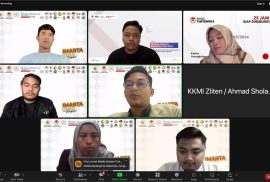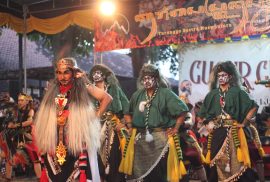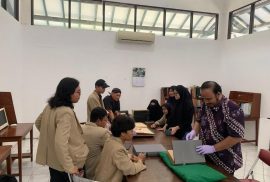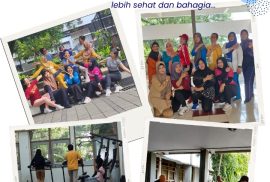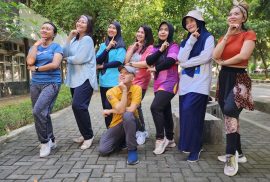The Middle East Cultural Studies Student Association (IMABTA) UGM and the Indonesian Students Association of the Middle East and Africa Region (PPIDK Timtengka) collaborate in the implementation of a series of activities “Middle East Culture Week” which carries the theme Global Synergy for Empowering Impact. This series of activities was opened with the “IMABTA Menyapa” event which was held on Thursday, June 30, 2024 in a hybrid manner with the topic “Stringing Educational Intertwining between Middle Eastern and Indonesian Students”. The IMABTA Greeting event was attended by the Head of the Department of Intercultural Studies, Prof. Dr. Sangidu, M.Hum., Secretary of the Department of Intercultural Studies UGM, Dr. Mahmudah, M.Hum. Coordinator of PPIDK Timgtengka, Siti Amaliah, Lc., and representatives of Indonesian students in Middle Eastern countries, including: Egypt, Libya, UAE, Saudi Arabia, Jordan, Oman, Yemen, Tunisia, Morocco, and South Africa.
In his speech, Prof. Sangidu said that KBTT UGM is open to undergraduate graduates in the Middle East because the courses offered are relevant to the fields of study studied in the Middle East. The Professor of Arabic Literature also gave a message that the IMABTA Greeting activity was a good start to begin collaboration between KBTT UGM students and PPIDK Timtengka. This collaboration must be utilized as well as possible in increasing interest in Middle Eastern studies, as well as initiating student research collaboration in the fields of Language, Literature, and Culture. In the future, it is hoped that both parties can synergize in carrying out the activities of the Tri Dharma of Higher Education, namely Education, Research and Community Service.

